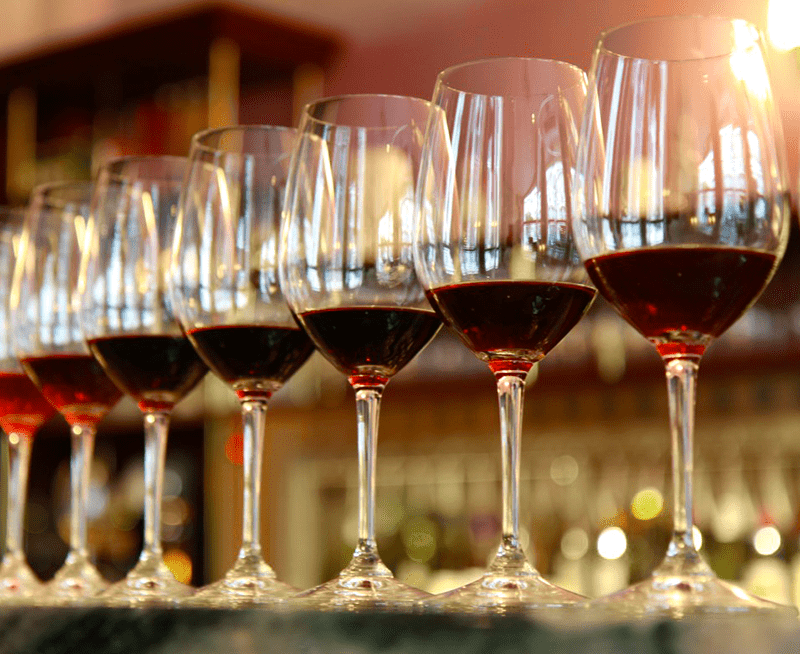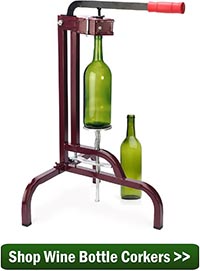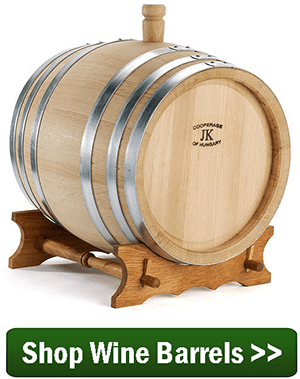 I understand the practice of using bench trials, but don’t know how to apply it to my wine making. I want to blend Cabernet, Merlot, and Sangiovese to produce an Italian Chianti style red. I’ll take a small amount of each and get what I want. How do I use this “formula” to make a large batch.
I understand the practice of using bench trials, but don’t know how to apply it to my wine making. I want to blend Cabernet, Merlot, and Sangiovese to produce an Italian Chianti style red. I’ll take a small amount of each and get what I want. How do I use this “formula” to make a large batch.
Name: Cos S.
State: PA
—–
Cos, thanks for a very good wine making question. For those of you who have never heard of bench trials, in terms of wine making, it is basically taking a small sample of a batch of wine and treating it in a specific way, and then evaluating the effects on that wine sample. If the results are favorable, you do the same thing to the rest of the wine batch. That’s basically how you go about using bench trials in winemaking.
As an example of using a bench trial, if some one has 10 gallons of wine and wants it sweeter, they can take 1 measured gallon of wine from the batch then add measured amounts of sugar syrup to the wine until it is the sweetness desired to establish a dosage. The best part is if you accidentally add too much sugar to the sample, you can add it back to the other 9 gallons and start all over with a new sample — without ever jeopardizing your wine. No risk to the entire batch.
Cos, in the instance of using bench trials to blend wines together, it is a matter of getting the ratios down for each wine. It’s all about the ratios. This means that you need to measure each wine before adding it to your blended sample. Once you know how much you used of each wine, you can then apply the formula in larger numbers.
Let’s say after playing around with different blends for a couple of days and several bench trials, you have determined that you like the blend of:
6 oz. Sangiovese
3 oz. Merlot
1 oz. Cabernet Sauvignon
You now have your ratio: 6/3/1. Right now it’s in ounces, but it could be in any measuring units that is convenient for you: mL’s quarts, gallons, barrels. If you wanted to create 10 gallons of the blend you would use:
6 Gals. Sangiovese
3 Gals. Merlot
1 Gals. Cabernet Sauvignon
If you want to only blend 5 gallons of wine it would be:
3 Gals. Sangiovese
1.5 Gals. Merlot
.5 Gals. Cabernet Sauvignon
 One fun activity you can do when using bench trials in winemaking is to do blind tastings. Have someone make several different variations without revealing which sample is which. Then you and friends can taste them and see which one you like best. Use the winner to change the rest of your wine(s).
One fun activity you can do when using bench trials in winemaking is to do blind tastings. Have someone make several different variations without revealing which sample is which. Then you and friends can taste them and see which one you like best. Use the winner to change the rest of your wine(s).
I hope this clears thing up a bit for you. The key to using bench trial in winemaking is to get everything measured that goes into the test sample. That way if you like it, you have a clear recipe as to what to do with the rest of the batch of wine.
I also wanted to mention that there is an article on our website titled, “Blending To Improve Homemade Wines” that you may want to look over. It goes into the art and science of blending homemade wine in more detail and covers a little more about using bench trials, as well.
Happy Winemaking,
Ed Kraus
—–
Ed Kraus is a 3rd generation home brewer/winemaker and has been an owner of E. C. Kraus since 1999. He has been helping individuals make better wine and beer for over 25 years.

Hi Ed;
I lije your article in wine blending. I like to ask you if it is possible to blend white and red wine?
Thank you
Oscar, there is no technical reason why you can’t blend a red and a white wine. The rule of thumb has just always been that you blend wine of similar character. If blending the two result in a flavor and style that you like, then by all means go ahead and experiment.
I still say if you want a new sweet wine starting at a SG..of .999, you find out what the S.G.is in a sweet wine you like and then add enough sugar and Potassium Sorbate in the wine it to bring it to that S.G. of the sweet wine or semi-sweet wine. This sounds more plausible that add keep adding a measured amounts of sugar until you get what you like and have to do all the calculations.
Is this what a winery do to make a semi – sweet wine?